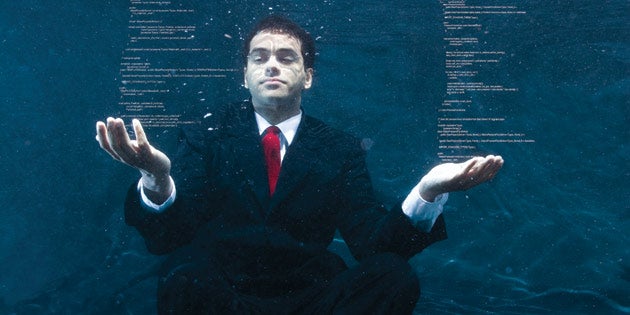He’s done it again: Nafees Bin Zafar ’98 is being honored for his insatiable appetite for destruction.
Seven years after winning his first Academy Award for disastrous digital effects used in Hollywood blockbusters, Zafar has been recognized a second time with the film industry’s top honor. In January 2015 Zafar was informed that would soon be given another Scientific and Technical Academy Award for his wizardry in the realm of visual effects, specifically for helping to blow things up.
READ: Learn more about Nafees Bin Zafar’s visual effects talents in the College of Charleston Magazine.
Known affectionately as the geek’s Oscars, Scientific and Technical Academy Awards are awarded in tandem with the more well-known Academy Awards handed out for notable dramatic achievements. But unlike the gold statues given to actors and directors, Scientific and Technical Academy Awards are not automatically bequeathed each year, but only when merited. Furthermore, when these awards are given, they recognize technical achievements that have been highly regarded by the film industry for years and years.
The first time around, Zafar and two collaborators were recognized for the development of fluid simulation software that enabled the creation of terrifying floods and storms in films like The Day after Tomorrow and Pirates of the Caribbean: At World’s End. This year, Zafar, Erwin Coumans and Stephen Marshall are being recognized for the creation of the Drop Destruction Toolkit, which allows visual effects artists to simulate the destruction of buildings with ease, as can be seen in films like Tron, Iron Man 3 and Thor.
EXPERIENCE: Think this is what you’re looking for? Request more information from the College of Charleston.
Both of Zafar’s Academy Awards recognize work he performed at Los Angeles-based visual effects company Digital Domain. Presently, however, Zafar lives in Shanghai and works as the director of research and development for Oriental DreamWorks. The move to Asia is a homecoming of sorts, as Zafar was born in Bangladesh and lived there until he was about 11 years old. Seeking better economic opportunities, his family moved to Charleston, where Zafar eventually enrolled at the College at age 16 (and graduated three short years later). Zafar credits the College of Charleston’s tight-knit computer science department for stimulating his interest in visual effects and for giving him the expertise necessary to begin a career in the entertainment industry.
Despite his appetite for digital destruction, Zafar is an extremely mild-mannered man. He’s returned to Charleston over the years to speak to high school and College students, encouraging them to engage in independent problem solving and to try things out for themselves. As he told one group of students:
“Trying different avenues in life has no cost attached. You always learn something, and you always come out ahead.”
Learn more about Zafar’s experiences at the College and in the digital effects industry below:





